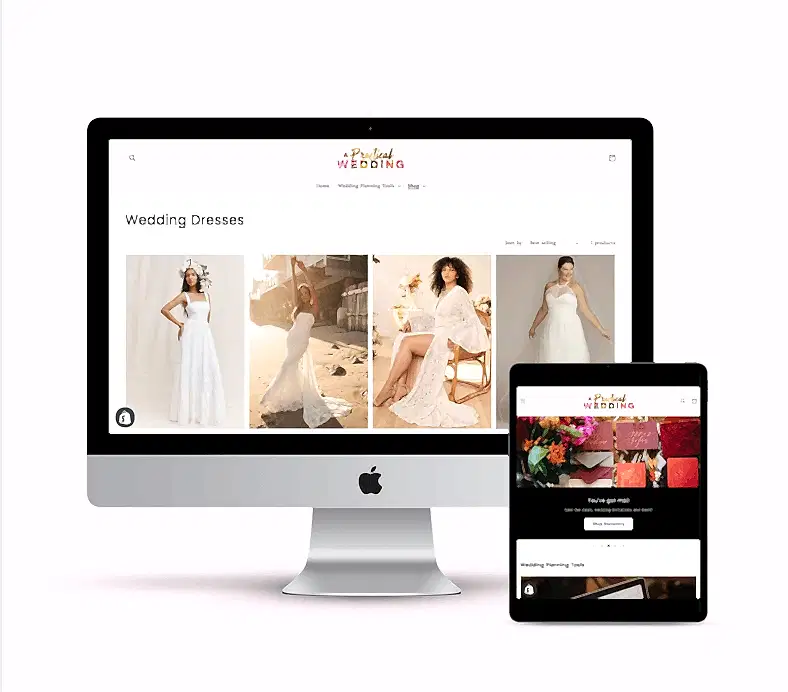We over here on the APW team have been thinking seriously about the idea I floated in last week’s entrepreneurship post—how our “real mission is to get people to improve their lives offline (passionate online community is great, but my real goal is to inspire people to change their offline communities).” We’ve been thinking: How do we talk about the change we’re facilitating in our own lives? How do we prompt people to talk about the changes they’ve made because of a post they read, or a conversation they had with someone in the comments, or an in-person discussion they had at an event? Today’s post is our first crack at it. Call it “Practicing Practical,” if you will. This post is from Kathleen, who attended the APW book talk in Atlanta, and she has real constructive advice for how women should deal with money in their day-to-day lives. Because y’all, we’re diving into money this week, and it’s hard. It’s For Richer For Poorer Week, Part I.
I attended the Atlanta book talk, and as Meg’s write up said, this wasn’t a night of wedding talk—it was a night of discussing our value as women, creators, contributors and (for lots of us in that room) business owners. Meg and Leah’s panel was so great, and the questions were even better, but the room felt… unsatisfied. Not finished. And as Leah said, we all needed to keep this conversation going, as there was so. much. there.
So in the spirit of “we are responsible to this community and to keeping this conversation going,” I told Meg as she signed my book that I’d be submitting about this topic, because if that room was any indication, we have a lot to learn from each other, and I want to learn from you all.
I know a little about how to value, position, and negotiate one’s worth, but (obviously) not all. My story is that I’ve had my own pregnancy and postpartum personal training business for the last eight years, and after working my way up the ladder (seriously, starting in 2005 as a contractor working just one hour a week) just negotiated a contract to come on as a partner/owner of a very large specialty fitness company. I’ve also spent the last two years in grad school, and I will graduate with my MBA in April (insert cheers and !!!!). Between owning a personal training business, working my way to partner, and earning my MBA, I’ve learned three big lessons/tools about setting and negotiating my monetary worth. The good thing is that these ideas work if you are negotiating a salary, or a rental fee for a wedding or a prenuptial agreement. (This is the point where I ask for more prenup posts because… yeah.)
1. Anchor: This is the hardest part to get right, and it’s also the most important. The gist is this: whatever number gets said first is where the conversation happens. If you start the conversation at a hundred dollars, you will NEVER get a hundred and one dollars. (And you are pretty likely to get fifty dollars.) If you think you are likely to get fifty, don’t start there—start higher. Anchoring means where the conversation starts is where it’s going to live. If a photographer quotes you $2,000, you probably aren’t going to end up paying them $2,500…or $400. On the other side, if a photographer quotes you $15,000, you probably aren’t going to end up paying them $5,000. Anchoring is the way to set the highest end of a ballpark. The goal is to set it high enough that you still get what you are worth (which, let’s be real, is probably more than you are currently asking for or getting) without killing the conversation or negotiation before it starts. The best way to set a good anchor is to look at:
2. Benchmarks: A woman at Atlanta’s book talk raised the very important point that we need to talk real numbers with other women. I have a girlfriend who’s an APWer (hi Lara!) with whom I discuss actual numbers—monthly budgets, debt, and finance goals—with almost weekly. We’ve been doing this for a few years now, and guys, IT IS SO HELPFUL. In negotiating talk, this is called benchmarking. If you know what other graphic designers charge, you’ll have less of a problem setting or, even more importantly, confidently quoting your fee. If you do know that your range is about 10-15% higher than other designers, you can have a bit more awareness and, again most importantly, communicate clearly why your work/process/etc is 10-15% more valuable, convenient, quick, or well done. Knowing numbers—what your friends make, what your colleagues and mentors make—is an exceptionally helpful set of information, and it gives you a range to set your anchor a bit above. So now, we’ve got actual numbers based on real data. It’s time for the talking, or in negotiation terms, we need a:
3. Script: This step is the easiest to forget about, and the one that I find helps me the most. The information to gather is: what is the script to use when negotiating this deal/promotion/design contact/prenup agreement (seriously guys, email me if you’ve done that one)? Basically, what do you say? In what order? And what is up for negotiation? If you are figuring out a salary increase, what did your best friend say when she got her salary increase? Even better, what did your boss say when she got promoted? If you know the benchmark (what folks are charging/paying) and the script (what folks said to get there) you are in such (such!) a better spot. If you know that a friend booked their dream venue at half the cost, ask them what they said to make that happen. Someone out there has exactly what you want at the lowest price you’ve dreamed of asking. If you can find out what they said (and often, you can) you are much closer.
So putting my money (ha!) where my mouth is—my actual numbers and actual script. Here’s real numbers talk (what a specialty personal trainer charges) along with an example of a high anchor/benchmark (it’s more than clients are expecting me to say, even though I don’t negotiate/budge on the fee) along with the script I use:
“I charge $60 a session, and sessions last around 35 minutes. There are no discounts for package deals, but you also don’t have to sign a contract. You can pay week-to-week or month-to-month, and you can have me for 1-4 sessions a week”
Guys, if APW became the place we shared our anchors, benchmarks and scripts… well, women would make a lot more money. And, if the women at the Atlanta talk were any indication, really creative, talented women would get to do more of what they love. And that would be a really, really good thing.
Photos of the Atlanta Book Talk by: LeahAndMark.com and Amanda Summerlin






